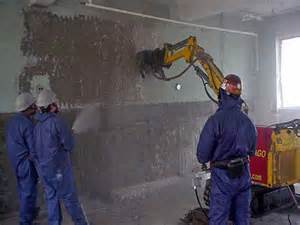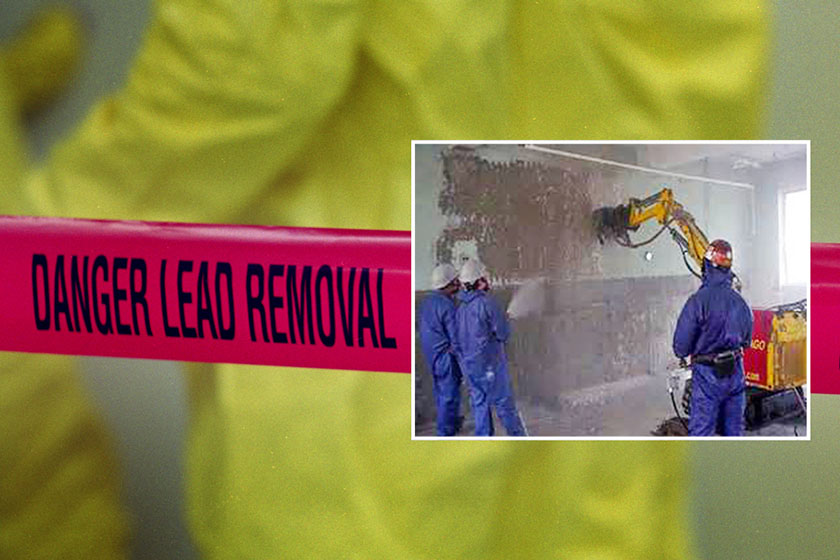 In the first two parts of the series “Get the Lead Out” (this is part 3 of 3) we focused on serious hazards and health effects of exposure to lead.
In the first two parts of the series “Get the Lead Out” (this is part 3 of 3) we focused on serious hazards and health effects of exposure to lead.
This month, I’ve listed a rundown of the regulations Realtors (and related industries) should be aware of:
- It’s illegal to create a lead hazard in California, no matter what the circumstances are.
- All pre-1978 structures potentially contain lead-based paint. If a contractor (or anyone else) is going to disturb paint in a pre-1978 building, it should be tested first, or considered to contain lead until it’s determined that no lead is present.
- This rule applies to ANY structure and ANY person in California, even if the homeowner does the work himself.
- A State of California certified Lead-Based Paint Inspector/Assessor must be used to determine if lead paint is present if someone is getting paid to do work that will disturb paint (in a pre-1978 building). Contractors may not do testing themselves.
- A homeowner who is doing his own work can do testing on their own by taking a paint chip sample to a lab.
- If it turns out the paint contains lead, in “public housing” – which includes apartment buildings, the contractor’s Supervisor and Workers must also be licensed by the State of California. In public housing there are extensive requirements that must be followed.
- In other buildings – such as private residences – if a contractor is going to disturb lead based paint, they (meaning the firm and the individual workers) must have a Lead Safe Certified Renovation certificate from the Federal EPA. This can be applied for here. The contractor must also provide the “Renovate Right” brochure to the homeowner if they are going to disturb more than six square feet of lead-based paint, and get a signed receipt for it. The brochure can be downloaded here.
- Regardless of the amount of lead in paint or the amount of paint disturbed, every contractor must comply with Cal-OSHA lead in construction requirements to protect their workers from exposure. These requirements can be found in Title 8, Section 1532.1 of the California Code of Regulations and are quite complex.
- If it seems like a contractor is not protecting his workers or the job site from lead contamination, the job should be stopped immediately and professional advice obtained from a licensed lead inspector/assessor.
- Post-lead removal testing, be sure lead contamination is not left behind. It’s required and/or recommended in most cases where lead paint is disturbed to get “clearance” testing. This needs to be done by a licensed inspector/assessor.
- Waste lead chips and building materials (wood, windows) with lead paint on it might be hazardous waste, and must be tested prior to disposal. These items can be taken directly to a lab for testing – they don’t need to be handled by a licensed inspector/assessor. There are very serious penalties for illegal disposal of hazardous waste, so don’t skip this step.
For homes built pre-1978 entering escrow or being leased, the Residential Lead-Based Paint Hazard Reduction Act of 1992 (U.S. Code § 4852d) must be complied with:
- Realtors must hand the buyer the “Protect Your Family from Lead in Your Home” brochure, which can be downloaded here. It’s recommended that you get a signature on a receipt from your Client that you gave them the brochure.
- The Seller must complete a Title X form and provide it to the buyers (or this one for lessors). All known lead-based paint hazards must be disclosed.
- There must be a 10-day inspection period to allow the buyers to test for lead if they wish.
- The contract must include specific warning language as well as signed statements from all parties verifying that all Title X requirements were completed.
- All the documentation (brochure receipts, Title X form, etc.) must be kept for at least three years.
- If you fail to comply with Title X requirements, the buyer or lessor can sue for triple the amount of damages actually suffered.
- You can get more information on the EPA’s Title X requirements here.
Information for Homeowners and Renters
If you’re a homeowner or renter in a pre-1978 property that might have lead paint, here’s some tips to help lower the chances that your family will be exposed to lead:
- Inspect and maintain all painted surfaces to prevent paint deterioration.
- Address water damage quickly and completely.
- Keep your home clean and dust-free.
- Clean around painted areas where friction can generate dust, such as doors, windows, and drawers. Wipe these areas with a wet sponge or rag to remove paint chips or dust.
- If you have old galvanized piping, let the water run for a few seconds before using it for drinking or food preparation.
- Clean debris out of outlet screens or faucet aerators on a regular basis.
- Wash children’s hands, bottles, pacifiers and toys often.
- Teach children to wipe and remove their shoes and wash hands after playing outdoors.
- Ensure that your family members eat well-balanced meals. Children with healthy diets absorb less lead. See the brochure “Lead and a Healthy Diet, What You Can Do to Protect Your Child.”
- If you are having home renovation, repairs, or painting done, make sure your contractor is Lead-Safe Certified, and make sure they follow the lead safe practices discussed above.
- You can help determine if your family is at risk for lead poisoning with the “Lead Poisoning Home Checklist.” You can also always ask your physician to run blood lead tests on your kids. We recommended it for kids under ten – and by law in California, it must be covered by your insurance plan.
Lastly, a reminder – I’m a licensed Lead-Based Paint Inspector/Assessor/Project Designer…so feel free to contact me with your lead paint issues.






